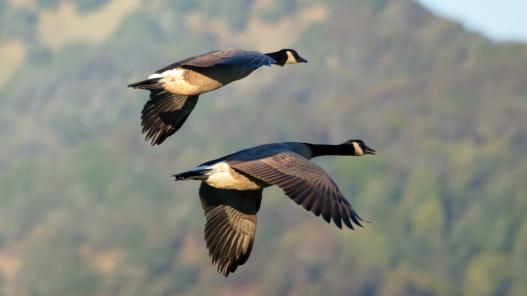March 2024 Edition | Volume 78, Issue 3
Published since 1946
Reflecting on Opportunities for Change
From the chair in my office in just the past couple weeks, I’ve witnessed the few larger V-shaped flights of Canada geese be replaced by numerous paired flights of geese. I’ve seen an American robin take particular interest in his reflection in my window, under the likely assumption it was not a reflection at all, but a potential rival. I’ve also seen the amaryllis in my office in full bloom. Although biologists, birdwatchers, hunters, and anglers aren’t in the least bit surprised by observations like these, I suspect the subtleties of changing seasons are lost on some people. Whether due to their insulation from nature in artificial worlds of manipulated temperatures and controlled environments or to the bigger issue of a simple indifference to Mother Nature and the constant changes she determines.

Another guaranteed sign of Spring is the annual occurrence of the North American Wildlife and Natural Resources Conference. This year’s conference (3/26 – 3/29) in Grand Rapids, Michigan will provide a lot of opportunities to reflect on the changes around us. All creatures maintain an inherent bias to change. That bias is an artifact of lifespan and other life history characteristics. Environmental changes experienced by the 24-hour lifespan of a mayfly is likely quite different than the changes experienced by a 250-year-old tortoise.
Humans, and our roughly 70–80-year lifespan, sometimes struggle to recognize, appreciate, or respond to change that either happens gradually or happens over periods of time much greater than our lifespan. Those among us either insulated from nature or indifferent to it, are especially challenged in detecting such change.
“Change is the only constant in life,” is a phrase that has been said in many ways and by many different people. Many of us in the natural resource field have made a career and spent our lives measuring, monitoring, or responding to change. Changes in technology, changes in science, changes in the climate, social attitudes, opinions, and values, all occur at various rates and magnitudes and for a suite of different reasons.
Change is a difference through time, and therefore must be compared to, or measured against, some derived standard or known condition. Biologists trying to better understand today and predict tomorrow, create change windows to a past that goes well beyond the human generational time, using tree cores and ice cores and carbon dating technology to see a past that occurred prior to modern measures and data.
To truly understand the current state of conservation, it’s important for us to understand where we have been—what is different now relative to our past, what are the trends toward our future. It is with these insights from our past that we can better affect our trajectory and future outcomes.
In addition to the usual slate of strong and relevant committee meetings, this year’s North American will provide opportunities to reflect on the history of conservation’s thoughts, ideas, individuals, and achievements. It will also explore some of the changes in society that impact the policies and processes of conservation. Lastly, there will be exploration of how conservation can pursue innovative and flexible approaches through the ESA, improve conservation relevance, and consideration of diverse and inclusive processes that effectively address rampant discord and divisiveness in society.
After all - “It is not the strongest of the species that survive, nor the most intelligent, but the one most responsive to change.” — Charles Darwin